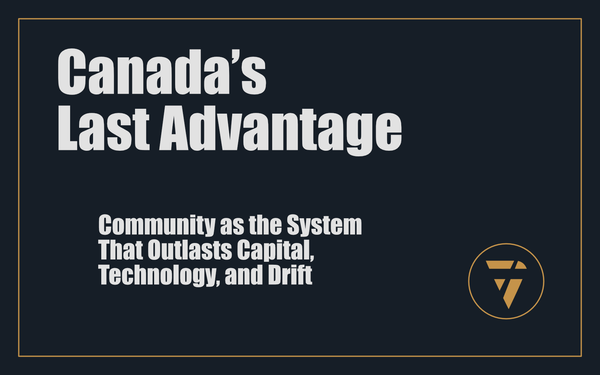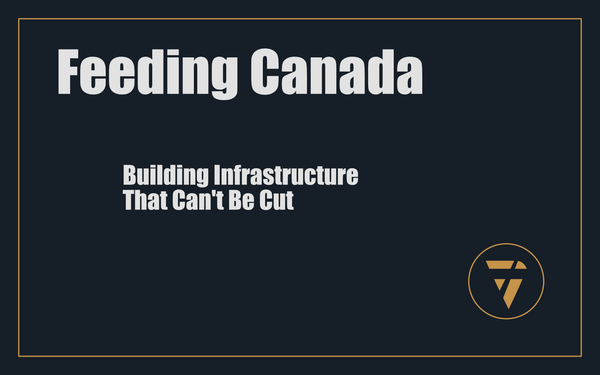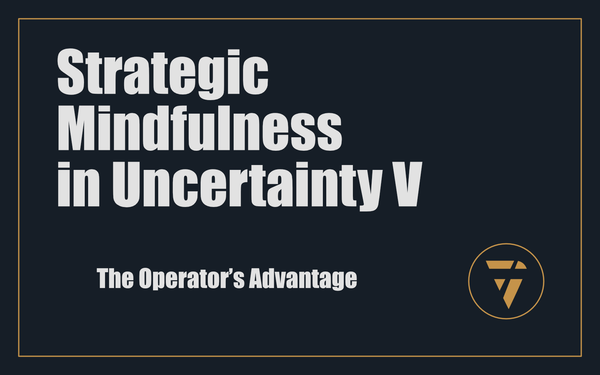Where the Money Is

And Why It’s Not Going To Care
From the Table Series: Replacing Senior Housing with Human Infrastructure
We keep hearing the lie:
“There’s no money for this.”
But long-term care isn’t broke.
It’s bleeding money into the wrong hands.
1. Follow the Flow
If you want to know why the care is broken — trace the capital.
Because long-term care in Canada is one of the few public-funded systems where:
- Infrastructure is often privately owned
- Care delivery is publicly subsidized
- Outcomes are functionally unmeasured
In plain language:
Private companies own the real estate.
The government pays the bills.
And the residents — the elders — receive what’s left after profit is extracted.
2. Where the Funding Goes Wrong
Let’s be precise.
In Ontario:
- Over 50% of LTC homes are for-profit
- In 2022, nearly $6 billion flowed into LTC
- But staffing levels still failed to meet basic needs
- Waitlists stretch over 40,000 people
So where did the money go?
Answer:
Real estate trusts.
Executive bonuses.
Consultant fees.
Legal protection.
Shareholder dividends.
Not:
- Trauma care
- Palliative integration
- Wage equity
- Elder dignity
3. The Result: Profitable Neglect
What you’re seeing is not underfunding.
It’s misallocation.
We’re not out of money.
We’re out of will.
The LTC economy works for everyone except the elder, the care aide, and the family.
Governments call it efficient.
But what they’ve built is an extraction machine — paid for with public dollars, delivering private returns.
And when crisis hits?
They publish another round of grants.
No new system.
Just new paperwork.
Wait until you see how it works in SK. 😳
4. The Table Is a Financial Engine, Not a Funding Drain
Proconsul never asked for charity.
We designed The Table to do what LTC could never do:
- Hold capital inside the care system
- Generate yield from regeneration — not extraction
- Anchor local jobs, food, trades, and supply chains
- Tie revenue to relationship, not volume
The Table is not a funding ask.
It’s an investment vehicle.
Every installation:
- Reduces public cost of hospital overflow and emergency transfer
- Prevents burnout and turnover (saving recruitment subsidies)
- Increases tax base through local economic inclusion
- Maintains liquidity through diversified tenancy and service stacking
This is what real reform looks like:
Not draining the system — but replacing the system with one that pays for itself by keeping humans whole.
5. Why Investors Are Paying Attention Now
Because the demographics don’t lie.
- By 2030, 1 in 4 Canadians will be 65+
- Housing demand is shifting to community and care
- Traditional LTC is at reputational, legal, and operational collapse
- ESG and impact capital are searching for credible long-hold structures
The Table fits all of it.
It’s not real estate.
It’s returnable dignity — with embedded care revenue, climate-aligned construction, and community-licensed models.
The Money’s Not Missing.
It’s Misused.
There is enough capital to care for every elder in this country with excellence.
We just stopped building places where that was possible.
The Table brings it back.
And this time, the returns don’t come from someone’s absence.
They come from presence.
This is what I’m working on. Tell me what you think, I enjoy the conversation! Subscribe and follow the work in real time.
Thanks!
B

“There’s no money for this.”
False.
There’s money.
It’s just going to lawyers, leases, and dividends — not dignity.
Don't ask for funding.
Hold capital in care.
Investors see it.
Now, so do you.
PS -






